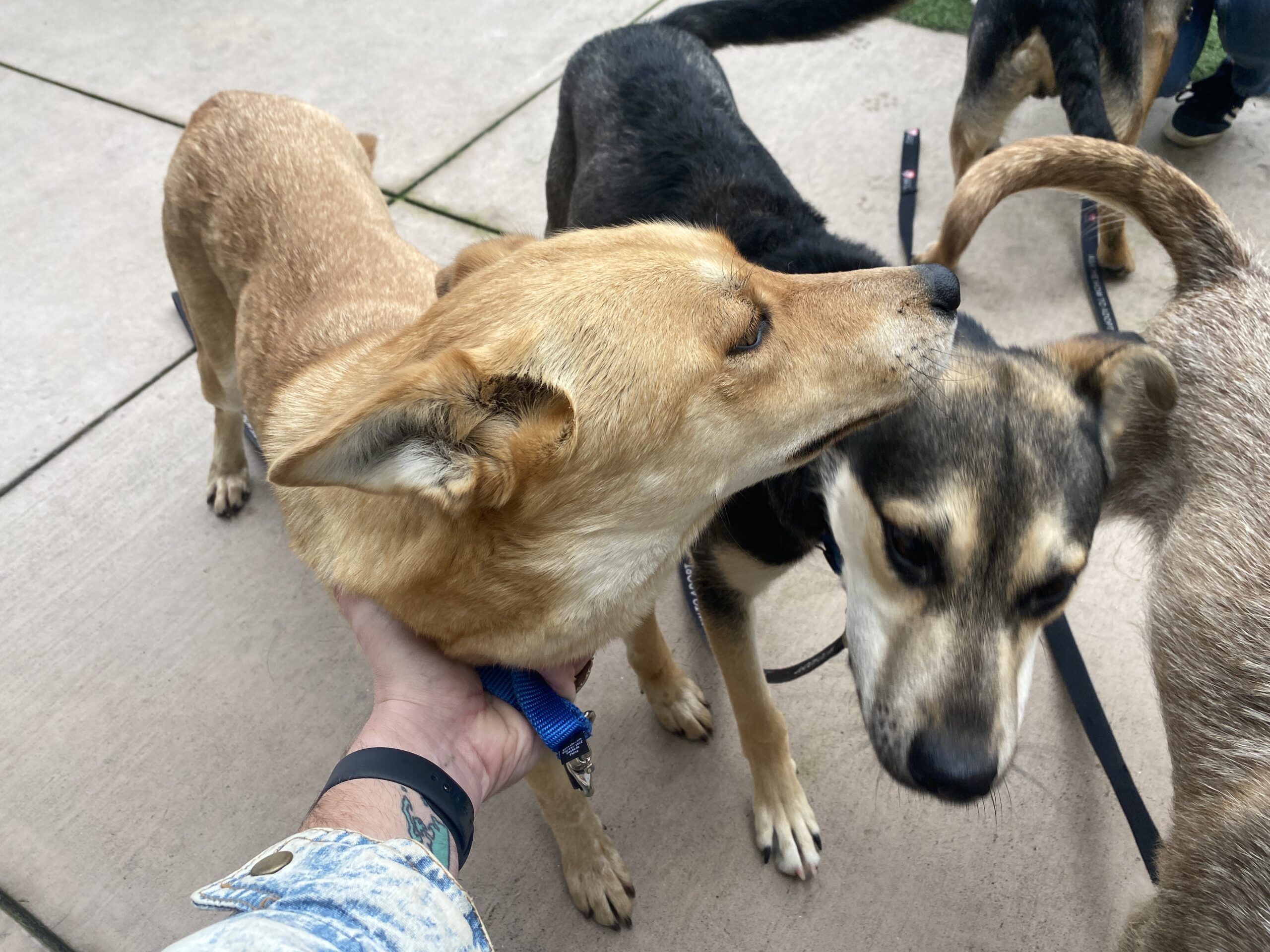The San Francisco SPCA turns 155 this year, and from now until the end of the month, the organization is looking to find good homes for 155 of the dogs and cats in its care.
While the numbers may sound celebratory, it’s also a relatively ambitious goal of around 40 cat and dog adoptions per day over four days. Perhaps more importantly, the SF SPCA’s “Be Mine Furever” push is meant to relieve severe overcrowding in the state’s animal welfare system, which currently houses some 350,000 cats and dogs across California. That’s roughly equivalent to the human population of Bakersfield, or the entire nation of Iceland, that’s a lot of animals hoping to find someone to love them back.
“Our goal is an adoption event where all adult animals are free through Jan. 31,” said Brandy Vause, the SFSPCA’s chief of advancement and community engagement. “California is experiencing a crisis of sheltering. They’re full in the Central Valley, so when you adopt an animal here, you open up space there.”
“By adopting one animal, you save three,” Vause added.
The Standard was among several media organizations that got a tour of SF SPCA’s facility on Florida Street on Saturday morning. Friend of the SPCA and state Sen. Scott Wiener was present as well.
A large white van that had ferried a number of cats and dogs from a partner shelter in Fresno arrived around 10 a.m. Staff and some of the SF SPCA’s 1,000 trained volunteers helped unload pet carriers to begin the intake process. Divided into two dog runs, the pups were given a few minutes of playtime to burn off some pent-up energy after the trip—and after the initial tongue-wagging mayhem, a bit of exercise lets their individual personalities start to come through.
Each animal gets examined by a veterinarian then, per state law, spayed or neutered. "Be Mine Furever" wasn’t even the neighborhood’s only adoption drive: Around the block, Muttville Senior Dog Rescue was encouraging people to think about taking in a mature pet.
The average stay inside the SF SPCA is only a few days—although bigger dogs, staff conceded, take longer to adopt. Compounding the state’s emergency, Central Valley’s shelters tend to have a disproportionate number of bigger dogs, who also go on to have bigger litters.
A founder of the no-kill movement, the SF SPCA is also a pioneer in cage-less care. Instead, animals live in glass-walled enclosures outfitted with treat chutes and electronic touchscreens that indicate their names, ages, vitals and personalities. For example, Indiana Bones is a 10-month-old, 42-pound, black-and-tan shepherd mix from Fresno with an adorably furrowed brow, and he’s been at the SPCA for only the past week.
To keep everybody healthy, rescued dogs get their own rooms, although they’re likely to be kept together if they’re siblings or otherwise bonded. Because cats don’t get outdoor time and because they’ll stop grooming themselves if they feel too confined, they inhabit slightly fancier quarters, some with a Sutro Tower or Golden Gate Bridge replica.
January is a slower time of year for animal care, a fallow period before “kitten season” starts up in the spring. Some 4,500 animals a year are successfully adopted through the SF SPCA, which typically houses around 150 animals at any given time. Additionally, there’s a foster program for people testing their readiness for full pet ownership, or to help children acclimate to a furry family member.
The average cost of an animal rescue, irrespective of species, is around $2,000. Donations defray about half the SPCA’s costs, with fees for service making up the rest. Because the SF SPCA’s mission is essentially to improve the well-being of all dogs and cats within its reach, the organization operates a monthly vaccine clinic at the Cow Palace and a satellite facility in San Francisco’s vet-starved Excelsior District, essentially giving away more than $1 million in services annually.
As such, it’s not only the largest animal hospital in the Bay Area but one with sufficient resources to balance medical care without throwing human companions into debt. Last week, a cat with serious burns was brought in by its low-income owner, and after interventions to save its life, the staff was able to send the feline home quickly enough that all it needed was lower-cost outpatient care, like fresh bandages and wound treatment.
“It’s a little bit MacGyver and a little bit medicine,” said Paola Freccero, the vice president of hospital operations.
Be Mine Furever
📍 San Francisco SPCA | 250 Florida St., SF
🗓️ Jan. 28-31
🔗 sfspca.org
